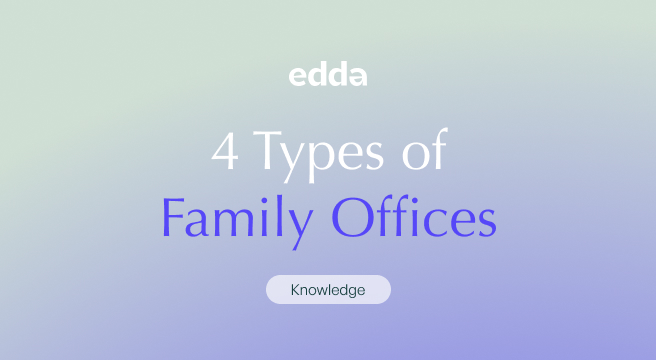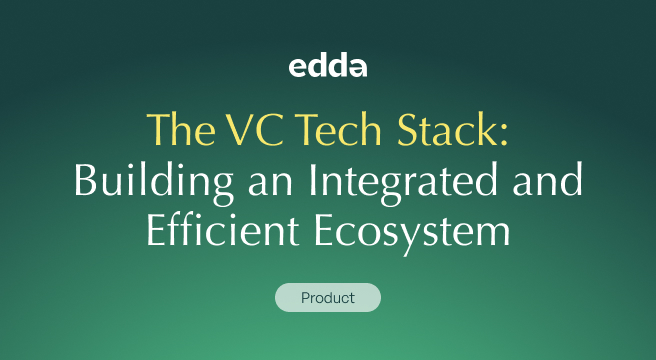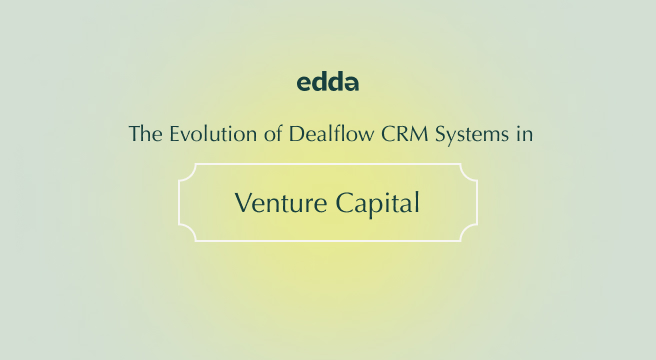A family office is a private wealth management advisory firm that serves ultra-high-net-worth individuals (UHNWIs) and their families.
Unlike traditional wealth management firms or private banking institutions, a family office provides comprehensive services that are tailored to manage the entire financial and personal affairs of an affluent family. Their purpose is to oversee and sustain wealth for current and future generations.
Family offices offer a broader and more integrated range of services compared to other wealth management firms. While other financial firms might focus on short-term financial returns, family offices have a distinct orientation towards long-term wealth preservation and intergenerational transfer. They are structured to provide stability and support to families across multiple generations, often with a focus on legacy building.
Setting up and operating a family office is a significant investment, usually viable for those with substantial wealth due to the operational costs involved.
There are multiple types of family office models to consider, so how do you determine which one is right for you? In this article, we’ll explore 4 types of family office models. In addition, discover how can venture capital CRM software support your family office.
Single Family Office (SFO)
A Single Family Office (SFO) serves as the epicenter for managing the financial and personal dimensions of an affluent family’s life. Tailored to the highest degree, it is crafted to align perfectly with the particular desires, financial objectives, and aspirations that the family holds dear.
This bespoke nature of an SFO ensures that the family’s values and vision are reflected in every aspect of wealth management, investment strategy, and even the day-to-day handling of personal affairs.
Operating in the realm of exclusivity, an SFO provides the family with unparalleled autonomy when it comes to investment choices and asset management, fostering an environment where strategic decisions can be made swiftly and without the need to reconcile external interests. This autonomy empowers the family to concentrate on strategies that will add to their financial legacy over time, laying the groundwork for wealth to flourish across generations.
However, the sophistication and high-touch nature of services rendered by an SFO come with a notable financial footprint. The expenditure necessary to maintain such a personalized and responsive operation can be substantial, often necessitating a significant portion of the family’s resources. As a result, the establishment and sustained operation of an SFO becomes viable and justifiable only for those possessing considerable wealth.
Another point of consideration is the managerial demands of an SFO. As the stewards of the family’s wealth begin to advance in age, the responsibility of overseeing such a complex structure can become burdensome, calling for meticulous planning and the potential introduction of successive family members or trusted executives into the fold to ensure continuity.
For families whose assets and interests are extensive and diverse—typically in the range of hundreds of millions of dollars—the establishment of an SFO can be a strategic move. It not only consolidates the management of their wealth under a singular directive but also allows for a legacy to be crafted and controlled according to the family’s unique blueprint.
Despite the inherent challenges, for those who value discretion, direct oversight, and the long-term cultivation of their financial and personal endeavors, an SFO presents itself as a compelling avenue for wealth management.
Multi-Family Office (MFO)
A Multi-Family Office (MFO) functions as a collective hub for wealth management, serving the intricate needs of multiple affluent families. It operates on the principle of shared resources and expertise, leveraging the scale of pooled capital to achieve greater cost efficiencies. In an MFO, families have the opportunity to access a wider array of investment opportunities and expert advice, often at a reduced individual cost owing to the distributed expense structure.
The collaborative environment of an MFO allows participating families to gain insights and engage in investment strategies that might otherwise be outside their reach. By sharing in the collective wisdom and experience of a larger group, each family can benefit from the diversity of thought and strategy that such a collaborative approach naturally fosters.
Yet, this model can come with its own set of complexities. The profit motive, which drives any business, may sometimes lead to a focus on shorter-term financial gains, which could potentially be at odds with the individual long-term wealth preservation goals of the families involved. Additionally, as an MFO caters to a variety of family interests, the risk of conflicting priorities emerges, requiring diligent management to ensure that the investment strategy remains impartial and beneficial to all parties.
MFOs are particularly appealing to those who have amassed considerable wealth and are seeking to optimize their investment through shared knowledge and costs. They find a balance between the exclusivity of an SFO and the broader reach of financial services offered by traditional wealth management firms. By choosing to engage with an MFO, families can enjoy the benefits of professional wealth management and sophisticated investment strategies while mitigating the burden of sole proprietorship over their financial affairs.
Virtual Family Office (VFO)
A Virtual Family Office (VFO) is an innovative and streamlined approach to wealth management that leverages digital technology to serve the needs of families, often in a remote capacity. This model is particularly cost-effective for families with assets between $10 million and $250 million, allowing them to enjoy personalized financial services without the traditional overhead costs associated with physical offices.
The agility of a VFO lies in its use of advanced digital platforms and tools, which foster seamless collaboration among financial advisors, tax experts, legal counsel, and other professionals. This network of specialists operates in concert, though they may be geographically dispersed, to provide comprehensive services that range from investment management to estate planning.
While a VFO can offer significant cost savings and the convenience of remote access, it is not without its challenges. The reliance on technology for communication and service delivery might present coordination hurdles, and there may be a learning curve for families and advisors to effectively interact in a virtual environment.
Furthermore, the nature of a VFO might not fully satisfy families who value face-to-face interactions or those with complex wealth structures that require a more hands-on management approach.
For families that are tech-savvy and those seeking a balance between fiscal prudence and bespoke service, a VFO presents a compelling model. It combines the expertise of traditional family offices with the efficiency and accessibility of modern technology, offering a wealth management solution that aligns with contemporary lifestyles and communication preferences.
Embedded Family Office (EFO)
An Embedded Family Office (EFO) emerges naturally from the fabric of a family-owned business, serving as a custodian of both the family’s wealth and the business’s financial health. It is an integral part of the business infrastructure, designed to oversee and harmonize the financial aspects of the family’s and business’s needs. The EFO model is particularly adept at ensuring the continuity of wealth management practices while supporting the day-to-day operations of the family business.
This fusion of personal and business wealth management typically offers a high level of oversight and control, as the family office’s activities are deeply intertwined with those of the business. It facilitates a unified strategy for growth and wealth preservation, benefitting from the intimate knowledge of the family’s financial and business landscape. The EFO structure allows for a seamless transition of values, wealth, and responsibilities from one generation to the next, often making it an integral component of the family’s legacy.
However, the close association between the family office functions and the business operations can also raise certain challenges. Privacy may be compromised, as the lines between family and business finances can blur. Additionally, the complexity of intertwining personal wealth with business assets can lead to potential tax implications and financial risks, especially as regulations evolve and the family’s wealth diversifies.
As the wealth portfolio broadens and the needs of the family become more sophisticated, the EFO may confront the need for transformation into a more distinct and possibly detached family office structure. This evolution can be essential to address the increasing complexity of managing extensive wealth separate from the core family business.
For families whose financial identity and business endeavors are closely linked, the EFO stands as a testament to their legacy, providing an integrated approach to managing wealth that is as much about preserving a way of life as it is about securing financial assets. It represents a model of wealth management that is deeply rooted in the family’s entrepreneurial spirit and business acumen.
Empower Your Family Office with Edda
Edda’s software for venture capital firms can significantly benefit family offices by streamlining their investment management processes and enhancing strategic decision-making. Here are four key ways Edda proves invaluable:
- Centralized Investment Management: Edda’s platform centralizes the entire investment lifecycle, allowing family offices to efficiently manage and oversee a diverse portfolio from a singular interface. This consolidation is especially beneficial for family offices engaged in various asset classes, ensuring a cohesive approach to wealth management and investment tracking.
- Enhanced Deal and Portfolio Oversight: With integrated dealflow management software and portfolio oversight, Edda enables family offices to meticulously evaluate potential investments and monitor existing ones. This comprehensive visibility aids in identifying high-potential opportunities and assessing the ongoing performance of the investment portfolio, aligning with long-term wealth growth objectives.
- Relationship and Network Enhancement: The CRM portfolio management feature within Edda facilitates robust relationship management, maintaining detailed records of interactions with key stakeholders, including fund managers and co-investors. This network enhancement is crucial for family offices, as it broadens access to exclusive investment opportunities and fosters collaboration within the investment community.
- Operational Efficiency and Security: Edda introduces automation and advanced security measures to the investment management process, significantly reducing manual tasks and ensuring the protection of sensitive financial data. These features allow family office staff to focus on strategic initiatives while maintaining confidence in the security and compliance of their operations.
Unlock the full potential of your family office investments with Edda’s venture capital CRM. Streamline your portfolio management, enhance your relationships, and secure your legacy. Contact us to experience Edda’s revolutionary platform today!



